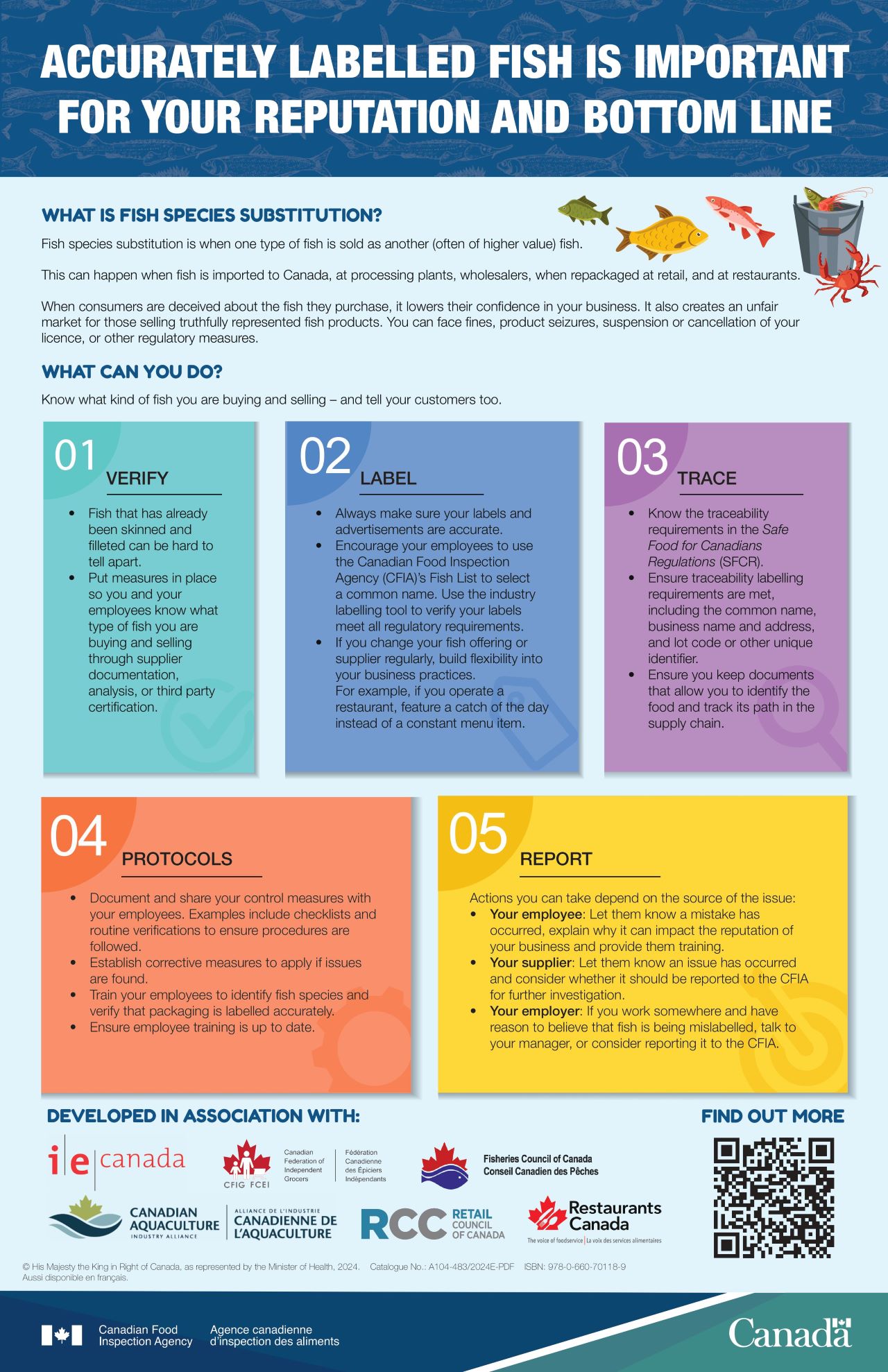
Infographic description: Accurately labelled fish is important for your reputation and bottom line
What is fish species substitution
Fish species substitution is when one type of fish is sold as another (often of higher value) fish.
This can happen when fish is imported to Canada, at processing plants, wholesalers, when repackaged at retail, and at restaurants.
When consumers are deceived about the fish they purchase, it lowers their confidence in your business. It also creates an unfair market for those selling truthfully represented fish products. You can face fines, product seizures, suspension or cancellation of your licence, or other regulatory measures.
What can you do
Know what kind of fish you are buying and selling – and tell your customers too.
Verify
- Fish that has already been skinned and filleted can be hard to tell apart.
- Put measures in place so you and your employees know what type of fish you are buying and selling through supplier documentation, analysis, or third party certification.
Label
- Always make sure your labels and advertisements are accurate.
- Encourage your employees to use the Canadian Food Inspection Agency's (CFIA)'s Fish List to select a common name. Use the industry labelling tool to verify your labels meet all regulatory requirements.
- If you change your fish offering or supplier regularly, build flexibility into your business practices. For example, if you operate a restaurant, feature a catch of the day instead of a constant menu item.
Trace
- Know the traceability requirements in the Safe Food for Canadians Regulations (SFCR).
- Ensure traceability labelling requirements are met, including the common name, business name and address, and lot code or other unique identifier.
- Ensure you keep documents that allow you to identify the food and track its path in the supply chain.
Protocols
- Document and share your control measures with your employees. Examples include checklists and routine verifications to ensure procedures are followed.
- Establish corrective measures to apply if issues are found.
- Train your employees to identify fish species and verify that packaging is labelled accurately.
- Ensure employee training is up to date.
Report
Here are some actions you can take, depending on the source of the issue.
Your employee: Let them know a mistake has occurred, explain why it can impact the reputation of your business and provide them training.
Your supplier: Let them know an issue has occurred and consider whether it should be reported to the CFIA for further investigation.
Your employer: If you work somewhere and have reason to believe that fish is being mislabelled, talk to your manager, or consider reporting it to the CFIA.
No one wins when fish and seafood is mislabelled, and everyone gains when we work together to ensure compliance.
Find out more about Fish and seafood labelling and traceability.
This page was developed in association with:
- Fisheries Council of Canada
- Retail Council of Canada
- Canadian Federation of Independent Grocers
- Restaurants Canada
- Canadian Association of Importers and Exporters
- Canadian Aquaculture Industry Alliance
